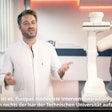
BERLIN (Reuters), Jul 12 - Germans with no real health problems are needlessly taking in heavy doses of radiation because of an alarming increase in the use of computerized body scanning, the country's environment minister said.
Computed tomography or CT scanning, is a common medical imaging method that uses x-ray images to create three-dimensional pictures of the body.
It is used to diagnose diseases such as cancer but doctors are increasingly using it for full-body scans to rule out hidden problems. German Environment Minister Sigmar Gabriel called the unnecessary use of CT scans an irresponsible practice.
"We are very concerned about the increase in examinations using computed topography, such as so-called 'manager checkups,' " he told a news conference on the release of an annual report about radiation in Germany on Thursday.
"Managers don't have much time to deal with their health. So they bring you in, check if everything's in order and then you can neglect your health for the rest of the year," he said. "CT scans in preventative medicine without any medical indications or when no illness is present are nonsense."
Spending on healthcare has risen about 80% since 1970 to over 11% of Germany's Gross Domestic Product according to a study by Deutsche Bank published last year.
Germany's Federal Office for Radiation Protection wants a critical study of the situation and a halt to unnecessary CT scans, he said, noting that even small doses of radiation increased the risk of cancer.
Gabriel's warnings comes after a new study by the U.S. National Council on Radiation Protection said the per-capita dose of ionizing radiation -- the most potentially harmful type of radiation -- from medical exams rose nearly 600% between 1980 and 2006 in the U.S.
In Germany, a country of some 82 million, there were 1.6 radiological examinations per person in 2004, Gabriel said.
"Of those, only 7% were CT scans," he said. "But due to its high radiation level the CT scans accounted for more than half of the total radiation used in x-ray examinations."
Doctors -- and patients themselves -- should be aware of the risks of x-ray and should try to avoid superfluous radiation exposure by only using radiological diagnostic equipment when it is absolutely necessary, Gabriel said.
By Louis Charbonneau
Last Updated: 2007-07-12 11:00:59 -0400 (Reuters Health)
Related Reading
Dual-source CT offers equivalent or lower dose compared to 64-slice, April 26, 2007
Copyright © 2007 Reuters Limited. All rights reserved. Republication or redistribution of Reuters content, including by framing or similar means, is expressly prohibited without the prior written consent of Reuters. Reuters shall not be liable for any errors or delays in the content, or for any actions taken in reliance thereon. Reuters and the Reuters sphere logo are registered trademarks and trademarks of the Reuters group of companies around the world.


















